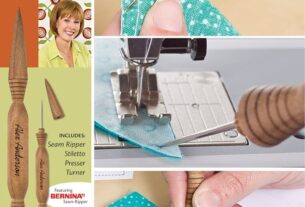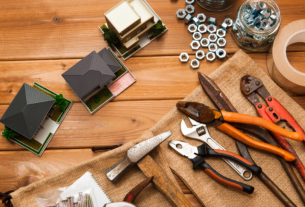As a DIY enthusiast, it can be frustrating to spend more time looking for tools than actually using them. A tool board is an excellent solution to this problem that many people overlook. In this article, we will explore the benefits of using a tool board and show you how to create one that suits your needs.
What is a Tool Board?
A tool board is a storage device used to organize workshop tools in an easy-to-access manner. It consists of a board with hooks or slots where tools are hung or inserted. The board can be made from various materials such as wood, metal, or plastic.
Why Use a Tool Board?
1. Save Time
When you have a tool board, you don’t have to spend time searching for tools. All your tools are in one place, making it easy to find what you need when you need it.
2. Increase Efficiency
With a tool board, you can see all your tools at once. This makes it easier to plan and prioritize your tasks, which increases your efficiency.
3. Reduce Clutter
A tool board helps reduce clutter in your workspace by keeping everything organized and off the floor. This makes it easier to move around and work on projects without tripping over tools or equipment.
4. Improve Safety
When you store your tools on a tool board, they are less likely to get damaged or lost. Additionally, having a clear workspace reduces the risk of accidents or injuries caused by tripping over clutter.
How to Create Your Own Tool Board
1. Determine Your Needs
Before creating your tool board, determine what types of tools you want to store on it and how much space you have available.
2. Choose Your Board Material
Select a material for your board based on your needs and preferences. Wood is a popular choice because it’s durable and easy to work with. Metal boards are also an option, but they can be heavier and more expensive.
3. Choose Your Tool Hooks or Slots
Select hooks or slots that fit the size of your tools. You can purchase them online or at a hardware store.
4. Mount Your Board
Mount your board on the wall using screws and anchors. Make sure it’s level and secure before hanging any tools.
5. Hang Your Tools
Hang your tools on the board according to their size and weight. Use larger hooks for heavier tools and smaller hooks for lighter ones. Keep similar tools together to make them easy to find.
6. Label Your Tools
Label your tools with their names or pictures to make them easy to identify. This will save you time when searching for specific tools.
Conclusion
A tool board is an excellent way to organize your workshop and increase efficiency. By following these simple steps, you can create a tool board that suits your needs and helps you save time, increase efficiency, reduce clutter, and improve safety in your workspace.
References:
1. “Tool Board.” Wikipedia, Wikimedia Foundation, 15 May 2021.
2. “The Benefits of Using a Tool Board.” The Spruce Crafts, Dotdash Publishing, Updated 20 January 2021.
3. “How to Build a DIY Pegboard Tool Organizer.” Family Handyman, Trusted Media Brands Inc., Updated 9 September 2020.
4. “Organize Your Workshop with These Garage Tool Hangers.” Bob Vila, Vila Media LLC, Updated 30 October 2020.
5. “10 Tips for Organizing Your Workshop.” Popular Mechanics, Hearst Magazine Media Inc., Updated 25 February 2018.




